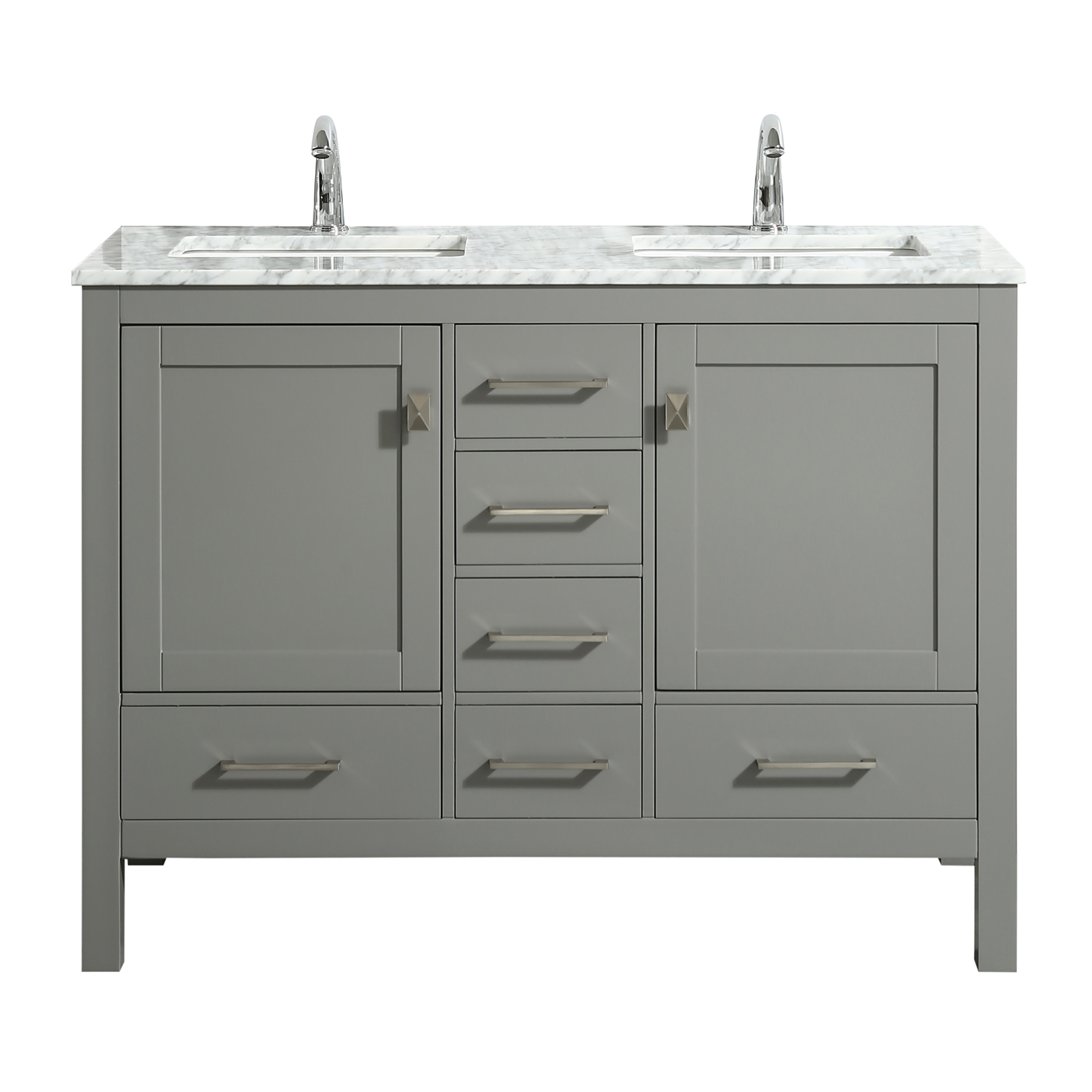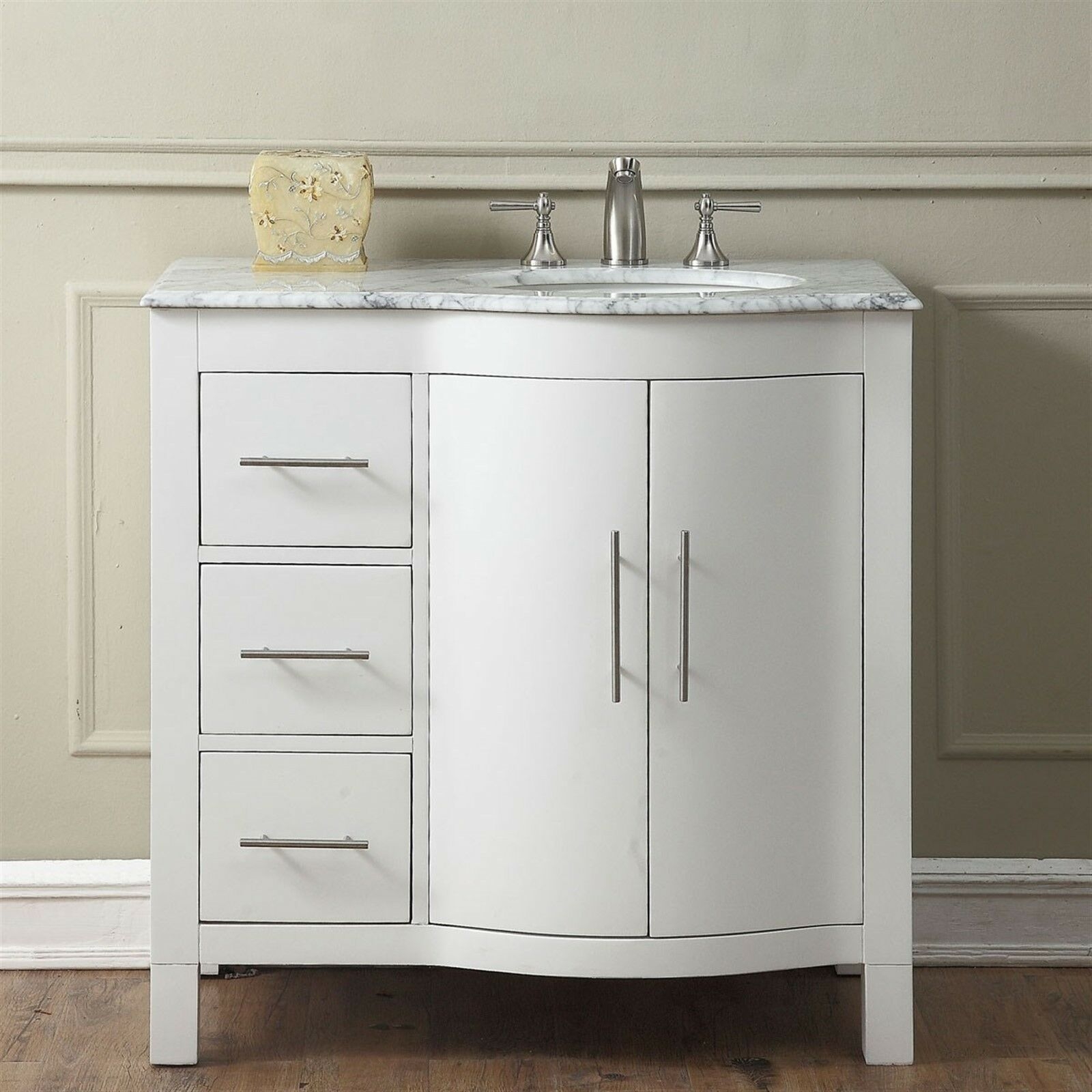Understanding 14-inch Depth Bathroom Vanities: 14 Inch Depth Bathroom Vanity

A 14-inch depth bathroom vanity is a space-saving option that can be a practical choice for smaller bathrooms or powder rooms. This type of vanity offers a balance between functionality and size, providing ample storage while minimizing the footprint in the bathroom.
Advantages and Disadvantages of a 14-inch Depth Bathroom Vanity, 14 inch depth bathroom vanity
- Advantages:
- Space-Saving: A 14-inch depth vanity is significantly smaller than a standard depth vanity, making it ideal for smaller bathrooms where space is limited. This can help create a more open and airy feel in the bathroom.
- Cost-Effective: 14-inch depth vanities are generally less expensive than standard depth vanities, as they require less material and labor to manufacture.
- Versatility: These vanities can be incorporated into various bathroom layouts, including small powder rooms, guest bathrooms, and even master bathrooms with limited space.
- Disadvantages:
- Limited Storage: The smaller depth can result in less storage space compared to a standard depth vanity. This may require careful planning and organization to maximize storage capacity.
- Limited Sink Options: The shallower depth can limit the types of sinks that can be used, as some sinks may not fit comfortably or aesthetically.
- Potential for Feeling Cramped: While space-saving, a 14-inch depth vanity might feel cramped for taller individuals or those who prefer more counter space.
Types of Bathroom Sinks Suitable for a 14-inch Depth Vanity
The limited depth of a 14-inch vanity necessitates choosing sinks that are specifically designed for this size. Here are some common types of sinks that are well-suited for this depth:
- Vessel Sinks: These sinks sit on top of the countertop and are often shallower than traditional sinks. They are a popular choice for 14-inch depth vanities because they minimize the depth required for the sink bowl.
- Undermount Sinks: These sinks are installed beneath the countertop, which allows for a more streamlined and integrated look. However, it’s crucial to ensure that the sink depth is compatible with the vanity’s depth.
- Semi-Recessed Sinks: These sinks offer a balance between the two, with a portion of the sink bowl sitting above the countertop and the other portion concealed beneath. They can be a good option for 14-inch depth vanities as they can provide ample space for washing while maintaining a visually appealing look.
Functionality Comparison: 14-inch Depth vs. Standard Depth Vanity
A 14-inch depth vanity offers a different functionality experience compared to a standard depth vanity. Here’s a comparison:
| Feature | 14-inch Depth Vanity | Standard Depth Vanity |
|---|---|---|
| Depth | 14 inches | 21-22 inches |
| Storage Space | Limited | Ample |
| Sink Options | Limited to shallower sinks | Wider range of sink options |
| Counter Space | Less counter space | More counter space |
| Footprint | Smaller | Larger |
Bathroom Layouts Where a 14-inch Depth Vanity Would be Suitable
A 14-inch depth vanity can be an excellent choice for various bathroom layouts, especially when space is a concern. Here are some examples:
- Small Powder Rooms: These rooms are often limited in space, making a 14-inch depth vanity an ideal solution for maximizing the available floor space.
- Guest Bathrooms: These bathrooms are typically used infrequently, and a smaller vanity can provide a functional and aesthetically pleasing solution without taking up excessive space.
- Master Bathrooms with Limited Space: Even in larger bathrooms, limited space in certain areas can necessitate a 14-inch depth vanity to accommodate the available footprint.
- Hallway Bathrooms: These bathrooms are often located in tight spaces and benefit from a compact vanity design that doesn’t impede movement.
Choosing the Right 14-inch Depth Vanity

Selecting the right 14-inch depth bathroom vanity involves considering several factors to ensure it meets your needs and complements your bathroom’s design. This depth is particularly suited for smaller bathrooms, as it allows for more floor space. You’ll need to balance style, functionality, and budget to find the perfect vanity for your space.
Style and Material Considerations
The style and material of your vanity are essential to creating a cohesive and aesthetically pleasing bathroom.
- Traditional: Opt for vanities with ornate details, such as carved wood, decorative hardware, and a classic silhouette. Popular materials include solid wood, like oak or cherry, for a timeless look.
- Modern: Modern vanities feature clean lines, minimalist designs, and often incorporate sleek materials like metal, glass, or high-gloss laminates.
- Contemporary: Contemporary vanities blend modern elements with a touch of traditional styling, often using natural materials like wood or stone.
- Transitional: This style combines elements of both traditional and modern design, offering a more versatile and adaptable option.
Storage Space and Functionality
When choosing a 14-inch depth vanity, maximizing storage space is crucial.
- Drawers: Drawers offer easy access to toiletries and other bathroom essentials. Consider vanities with multiple drawers, including soft-close features for quiet operation.
- Cabinets: Cabinets provide ample storage space for larger items, such as towels or cleaning supplies.
- Open Shelving: Open shelving offers a more minimalist look and can be used to display decorative items or frequently used products.
Key Features of High-Quality Vanities
Investing in a high-quality vanity ensures durability, functionality, and longevity.
- Solid Construction: Look for vanities made from solid wood or high-quality materials that can withstand moisture and everyday use.
- Durable Finishes: A durable finish will protect the vanity from scratches, stains, and moisture.
- High-Quality Hardware: Choose vanities with sturdy drawers and cabinet doors that operate smoothly and have high-quality hinges and handles.
- Pre-Drilled Sink Holes: This feature simplifies installation and ensures proper alignment of the sink.
Finishes and Colors
Finishes and colors play a significant role in setting the overall tone of your bathroom.
- Popular Finishes: Popular finishes for 14-inch depth vanities include natural wood stains, painted finishes, and laminates.
- Color Considerations: Consider the existing color scheme of your bathroom when choosing a vanity. Neutral colors, such as white, gray, or beige, offer versatility and can complement a wide range of styles. Bold colors, like black or navy blue, can create a statement.
Installing a 14-inch Depth Bathroom Vanity
Installing a 14-inch depth bathroom vanity is a project that can be tackled by most DIY enthusiasts with the right tools and knowledge. This guide will provide a comprehensive step-by-step process, including a checklist of necessary tools and materials, plumbing and electrical connections, and securing the vanity to the wall.
Tools and Materials
Before embarking on the installation, it’s crucial to gather all the necessary tools and materials. A comprehensive list is provided below, ensuring a smooth and efficient installation process.
- Tools: Level, tape measure, stud finder, pencil, drill, screwdriver, adjustable wrench, pipe wrench, hacksaw, utility knife, safety glasses, gloves, and a ladder.
- Materials: 14-inch depth bathroom vanity, countertop, sink, faucet, drain assembly, P-trap, shut-off valves, supply lines, electrical outlet box, electrical wiring, mounting hardware, silicone sealant, and caulk.
Preparing the Installation Area
The first step involves preparing the installation area. This includes clearing the space, removing the old vanity (if applicable), and checking the wall for studs.
- Clear the Space: Remove any existing furniture, fixtures, or obstructions from the area where the new vanity will be installed.
- Remove the Old Vanity: If replacing an existing vanity, disconnect the plumbing and electrical connections, remove the countertop, and carefully detach the vanity from the wall.
- Locate Studs: Use a stud finder to locate the wall studs where the vanity will be mounted. Mark the stud locations with a pencil for reference.
Connecting Plumbing Fixtures
Connecting the plumbing fixtures involves installing the drain assembly, P-trap, and supply lines to the vanity.
- Install the Drain Assembly: Connect the drain assembly to the sink and secure it with a nut. The drain assembly should be positioned in the center of the sink and aligned with the drain hole in the vanity.
- Install the P-Trap: Connect the P-trap to the drain assembly and secure it with a nut. The P-trap should be positioned below the vanity and secured to the wall with a strap.
- Connect the Supply Lines: Connect the supply lines to the shut-off valves and then to the faucet. The supply lines should be routed to the back of the vanity and secured with clips.
Connecting Electrical Fixtures
Connecting the electrical fixtures involves installing the electrical outlet box and wiring the vanity light.
- Install the Electrical Outlet Box: Install the electrical outlet box in the wall behind the vanity. The outlet box should be positioned in a location that is accessible and safe.
- Wire the Vanity Light: Connect the electrical wiring to the vanity light fixture and then to the electrical outlet box. Ensure that the wiring is properly secured and that the connections are tight.
Securing the Vanity to the Wall
Secure the vanity to the wall by attaching it to the studs using mounting hardware.
- Position the Vanity: Place the vanity in the desired location and level it using a level. Mark the wall where the mounting holes will be drilled.
- Drill Pilot Holes: Drill pilot holes in the wall at the marked locations. The pilot holes should be slightly smaller than the screws that will be used to attach the vanity.
- Attach the Vanity: Attach the vanity to the wall using the mounting hardware. Ensure that the screws are long enough to securely attach the vanity to the studs.
Installing the Countertop
Installing the countertop involves positioning the countertop on the vanity, securing it, and sealing the edges.
- Position the Countertop: Place the countertop on the vanity and align it with the edges of the vanity. Ensure that the countertop is level and that the sink is centered.
- Secure the Countertop: Secure the countertop to the vanity using clamps or brackets. The countertop should be securely attached to the vanity to prevent it from shifting or moving.
- Seal the Edges: Apply silicone sealant to the edges of the countertop where it meets the vanity. This will help to prevent water from seeping into the gap and causing damage.
